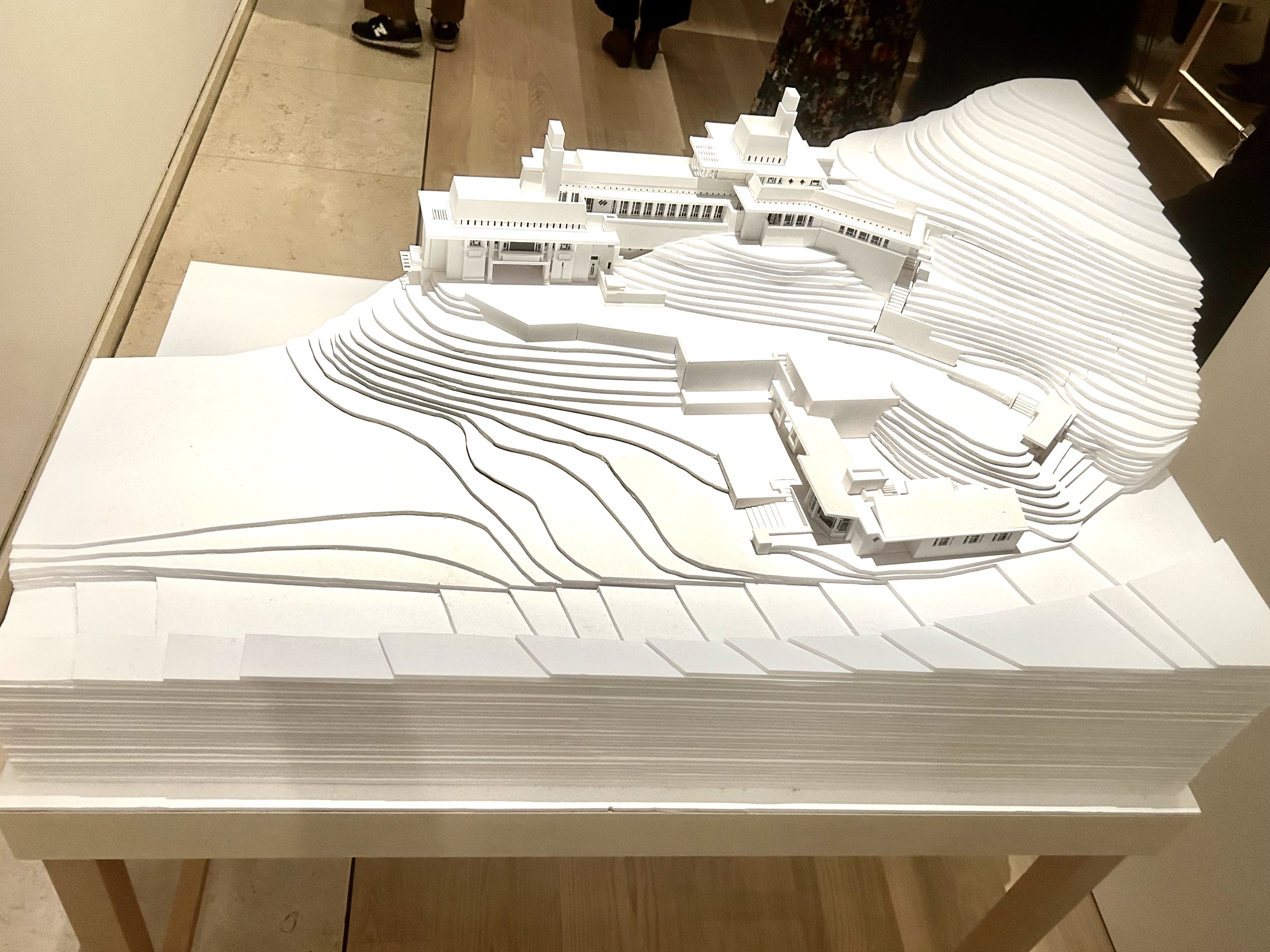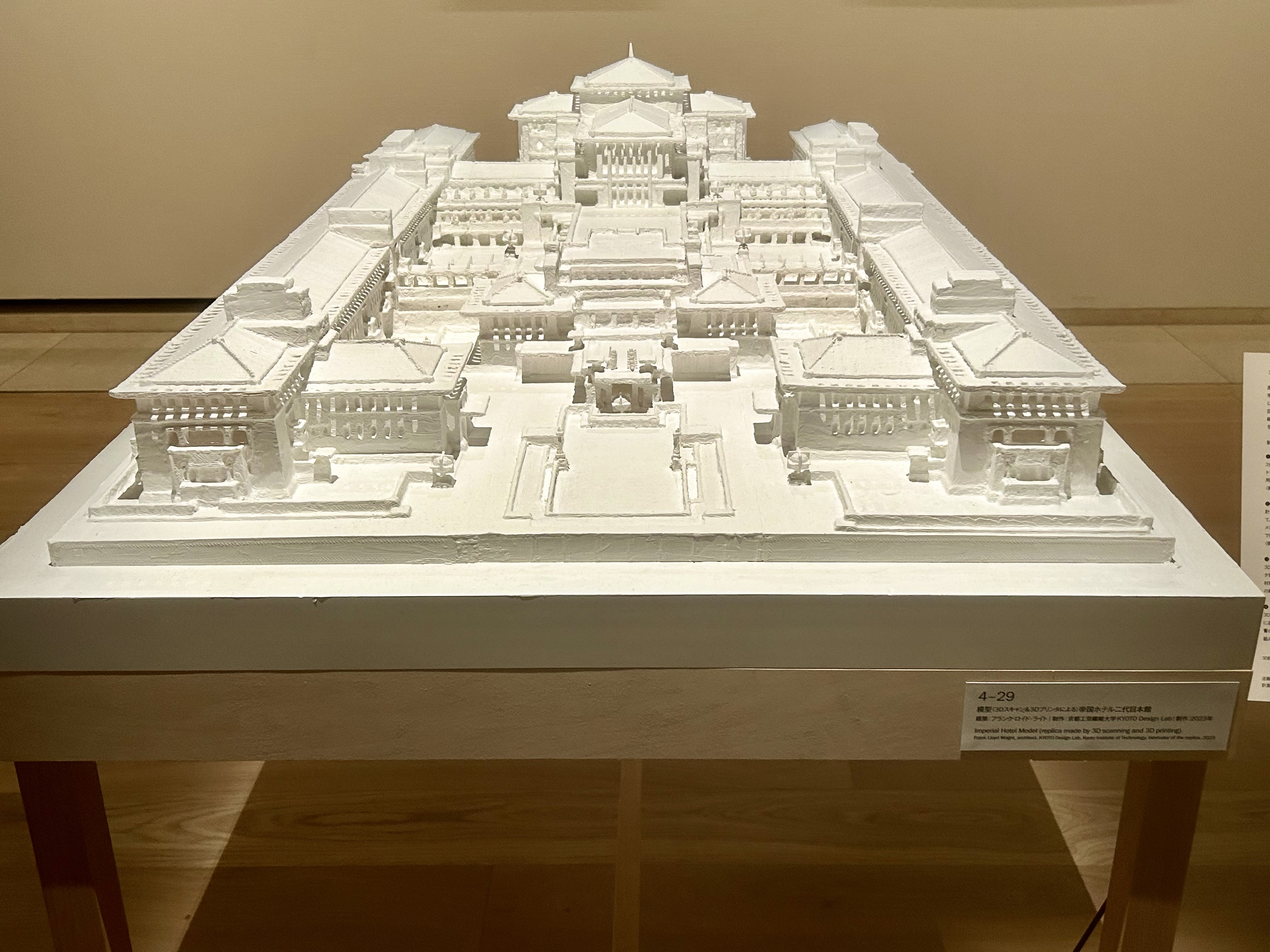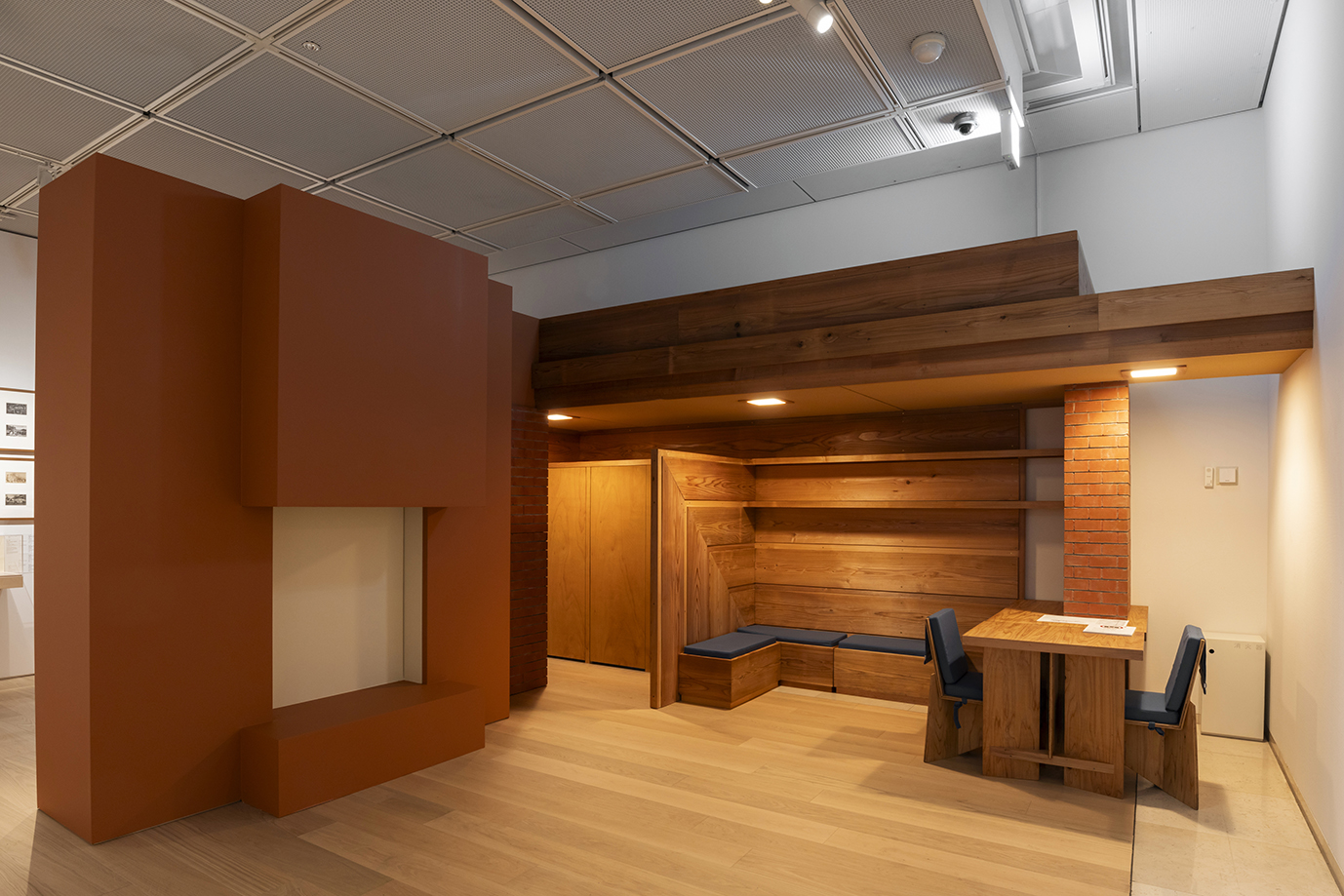THE WRIGHT IMPERIAL HOTEL AT 100: FRANK LLOYD WRIGHT AND THE WORLD
HAPPENINGText: Alma Reyes
Wright’s profound passion for Japanese art, particularly woodblock prints, was unfaltering. At the 1893 Chicago World’s Fair, he was said to have marveled at the Japanese pavilion Ho-o-den (Phoenix Hall), which exhibited themes of middle Heian period, Muromachi period, and Edo period. The deep roof eaves, lateral lines, and organic relationship of the interior and exterior aligned identically with Wright’s design direction. Wright inevitably became a Japanese art enthusiast, art dealer and exhibition producer, specifically, of the first Hiroshige exhibition at the Art Institute of Chicago in 1906. Here, he exposed 213 of his own collected Hiroshige prints. He perceived an underlying parallelism between Ukiyo-e compositions and his perspective of buildings, that he naturally incorporated their motifs in his designs. He remarked, “Japanese art is no longer the sequestered art of an isolated people, but one of the most valuable contributions ever made to the art of the world.”

Yamamura House model, Currently Yodoko Gest House, Ashiya, Japan Project, 1918-24, Frank Lloyd Wright, architect, Mizukami Laboratory, School of Human Science and Environment, University of Hyogo, fabricator, 2023, Photo: Alma Reyes
It was, therefore, unsurprising for Wright to pursue projects in Japan in the later years. The exhibition shows some of them, such as Odawara Hotel (1917), Tokyo Theater (also known as Ginza Movie Theater, 1918), Yamamura House (Yodoko Guest House, 1918-24), Jiyu Gakuen School (1921), and more. They all responded to the natural topography, and embrace of courtyards, gardens, and waterscapes that blended with Wright’s theme of “Taliesin,” Welsh term for shining brow.

Imperial Hotel model (replica made by 3D scanning and 3D printing). Frank Lloyd Wright, architect. KYOTO Design Lab, Kyoto Institute of Technology, fabricator of the replica, 2023, Photo: Alma Reyes
The classic Imperial Hotel opened in 1890. Due to the aging wooden structure, and growing number of visitors that became too unmanageable for the limited space, an urgent renovation was called for. Wright was selected to take over the second-generation refurbishment. Then hotel manager Aisaku Hayashi was familiar with the architect’s Ukiyo-e collections and believed in his capability to modernize the building to meet contemporary demands. Wright employed oya stone from Tochigi Prefecture, which was fire-resistant; “scratch tile blocks” produced in Aichi Prefecture to disguise the vertical joints between bricks; and reinforced steel bars to connect the walls, columns, ceilings and floors. He designed the interior decor, furniture, tableware and overall fine points reflecting geometric patterns. On the inauguration day of the hotel in September 11, 1923, the Great Kanto Earthquake struck and inflicted severe damages on the hotel, but the main building designed by Wright withstood devastation. This miracle was owed to the devise of the “floating raft foundation” that absorbed vibration, scratch tile blocks, and the large number of partition walls that reduced the seismic impact. A huge model of the hotel, reproduced by 3D scanning and 3D printing by KYOTO Design Lab of Kyoto institute of Technology is presented.

Life Sized Model of an Usonian House Forest Sawmill, Risola Limited Liability Partnership, Isoya Architectural Office and creator, 2023, Photo: Yukie Mikawa
Other decorative designs by Wright are seen in the Clerestory window from the Conley Playhouse (1912), Cover design of Saguaro Forms and Cactus Flowers for Liberty Magazine (1927-28), and other intricate accessories. Two chairs (1913 and 1920) and a side table from the Imperial Hotel, including a chair from the Coonley House (1908), a desk and attached chair from Larkin Building (1904), a chair from the Great Workroom of the SC Johnson Administration Building (1936), and another chair from Jiyu Gakuen School (1922) are on display. Visitors can also walk through the Life Sized Model of an Usonian House (2023) made from Japanese cedar from Izu based on the Baird House (1940) in Amherst, Massachusetts.
Wright’s diverse and unique creations have united cultures not only from Japan but also from other Asian countries, Mesoamerica, North America, Europe, and the rest of the world.
The Wright Imperial Hotel at 100: Frank Lloyd Wright and the World
Date: January 11th – March 10th, 2024
Opening Hours: 10:00 – 18:00 (Open until 20:00 on February 2nd, March 1st, 8th and 9th)
Closed on Wednesdays (Except for March 6th)
Place: Panasonic Shiodome Museum of Art
Address: 4F, Panasonic Tokyo Shiodome Bldg, 1-5-1 Higashi-Shimbashi, Minato-ku, Tokyo
Tel: +81 (0)50 5541 8600
https://panasonic.co.jp/ew/museum/en/
Text: Alma Reyes
Photos: Courtesy of Panasonic Shiodome Museum of Art





